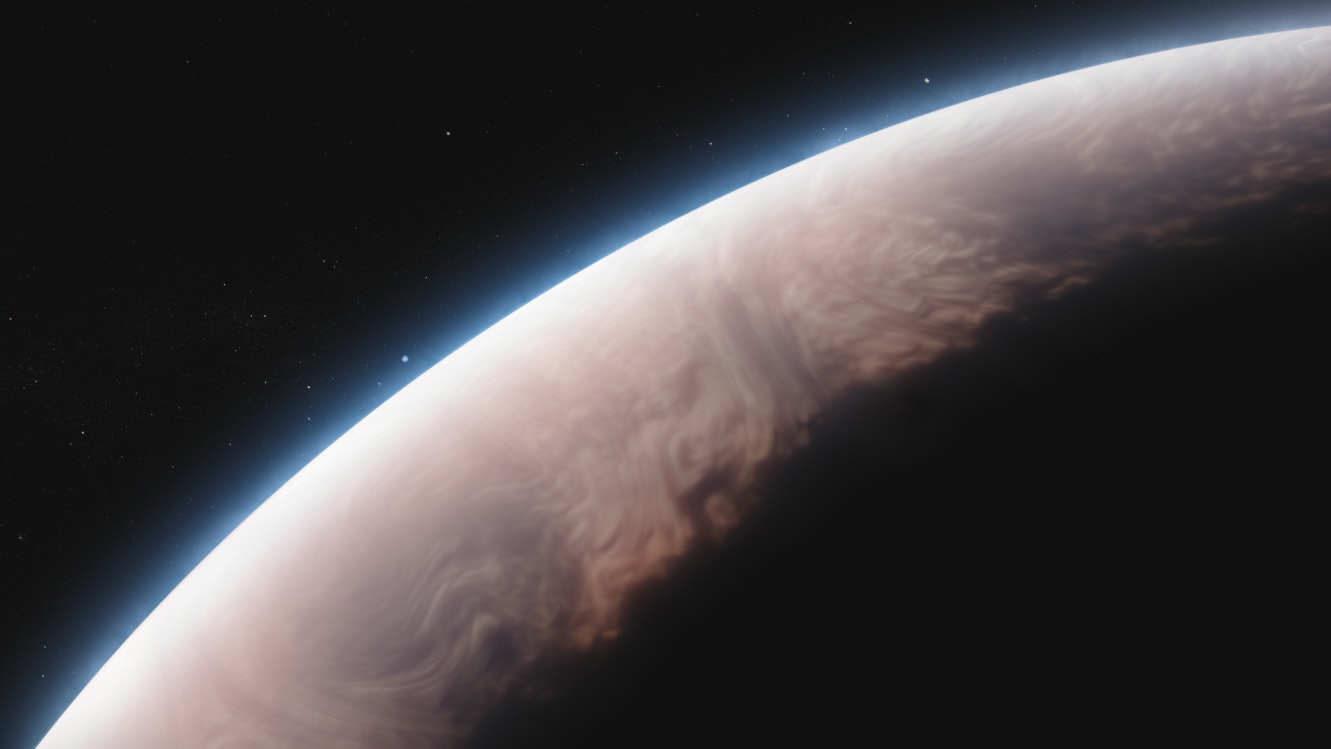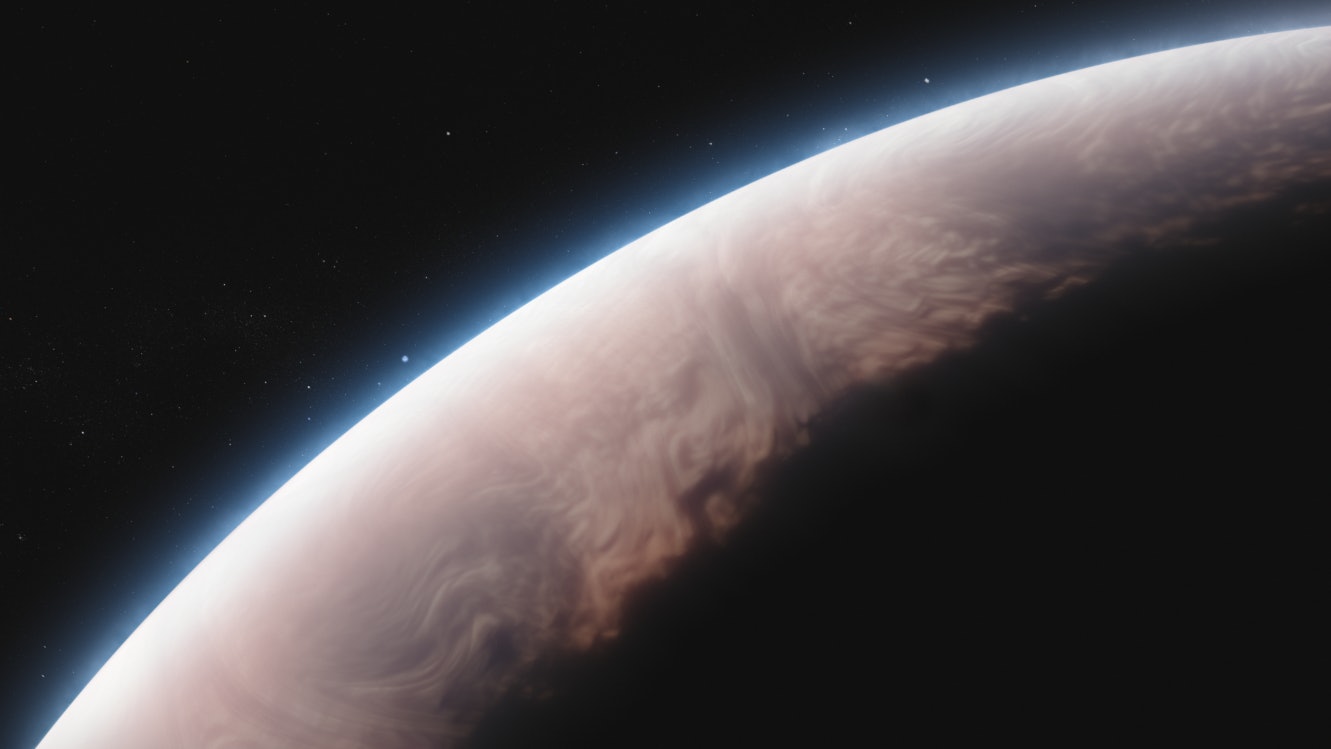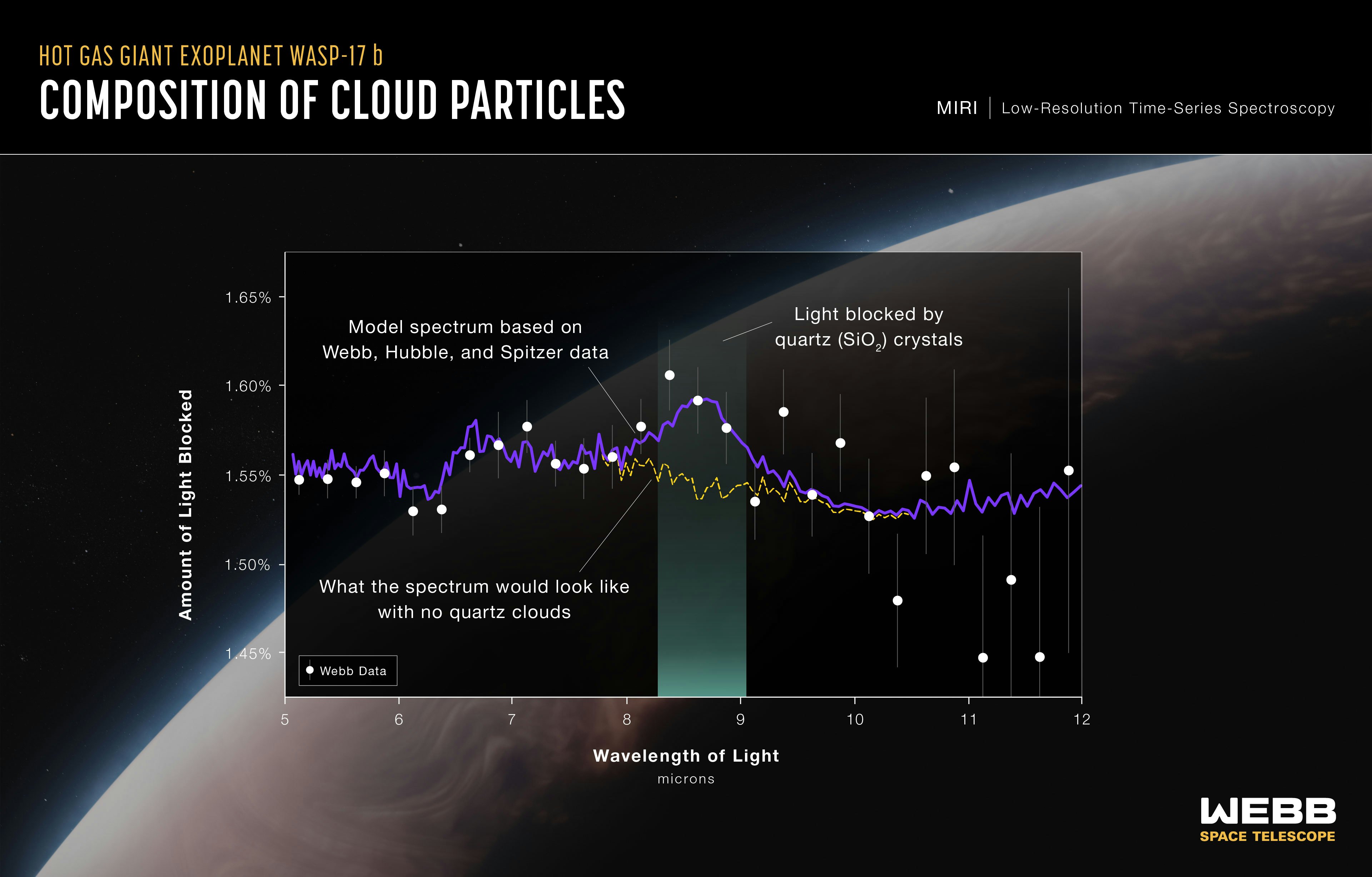
If you could see the clouds on WASP-17b, they might glitter as starlight reflects off the facets of billions of microscopic quartz crystals.
A team of astronomers, with help from the James Webb Space Telescope (JWST), just detected evidence of quartz in the planet’s upper atmosphere of the scorching hot gas giant, along the line where day turns into night. They published their findings in The Astrophysical Journal Letters.
Clouds of Glitter on Superheated Winds
As gas giant WASP-17b crossed in front of its star, a team of astronomers led by David Grant (of the University of Bristol) watched the star’s light filter through the planet’s hot, puffy atmosphere. They used JWST’s Mid InfraRed Instrument (MIRI) to measure the wavelengths of starlight the atmosphere blocked or absorbed — and they noticed that WASP-17b’s high-altitude clouds seemed to absorb most of the light at a wavelength of about 8.6 microns. That’s the wavelength of light usually absorbed by pure silicon dioxide, better known here on Earth as quartz.

When they combined JWST’s mid-infrared view of the planet with Hubble Space Telescope views in shorter near-infrared wavelengths and then even shorter wavelengths of visible light, Grant and his colleagues realized they were seeing the effects of clouds of nanoparticles: quartz crystals so small that individually, they could only be seen through a microscope. The crystals are probably the six-sided pointy shape familiar to rock and mineral collectors here on Earth, but each is only about half a millionth of an inch wide.
WASP-17b is a gas giant about half as massive as Jupiter but seven times wider. This strangely light, fluffy world zips around its star once every 3.7 days, and the star’s tremendous heat has inflated what was once a normal-sized gas giant into one of the widest, puffiest, and hottest gas giants astronomers have ever found. The star’s gravity has also pulled WASP-17b into a tidally locked orbit, so the planet rotates and orbits its star at the same speed, always keeping the same hemisphere baking under the star’s scorching rays.

The clouds probably form along the boundary between the gas giant’s extremely hot daylit side and its relatively cool night side. Roaring winds constantly blow from the hottest parts of the planet to the coolest, and they whisk the crystalline clouds along at thousands of miles an hour. And when the clouds reach the blazing 2700-degree Fahrenheit heat of the dayside, the tiny quartz crystals vaporize, turning into silicon dioxide gas.
Astronomers have spotted clouds of sand in the atmospheres of exoplanets before, but this is the first time they’ve found pure quartz. The sand on other worlds has been made of silicon dioxide mixed with magnesium and other chemicals.
“What we’re seeing instead are likely the building blocks of those, the ‘seed’ particles needed to form the larger silicate grains we detect in cooler exoplanets and brown dwarfs,” says University of Bristol astronomer Hannah Wakeford, a coauthor of the recent study, in a press statement.






